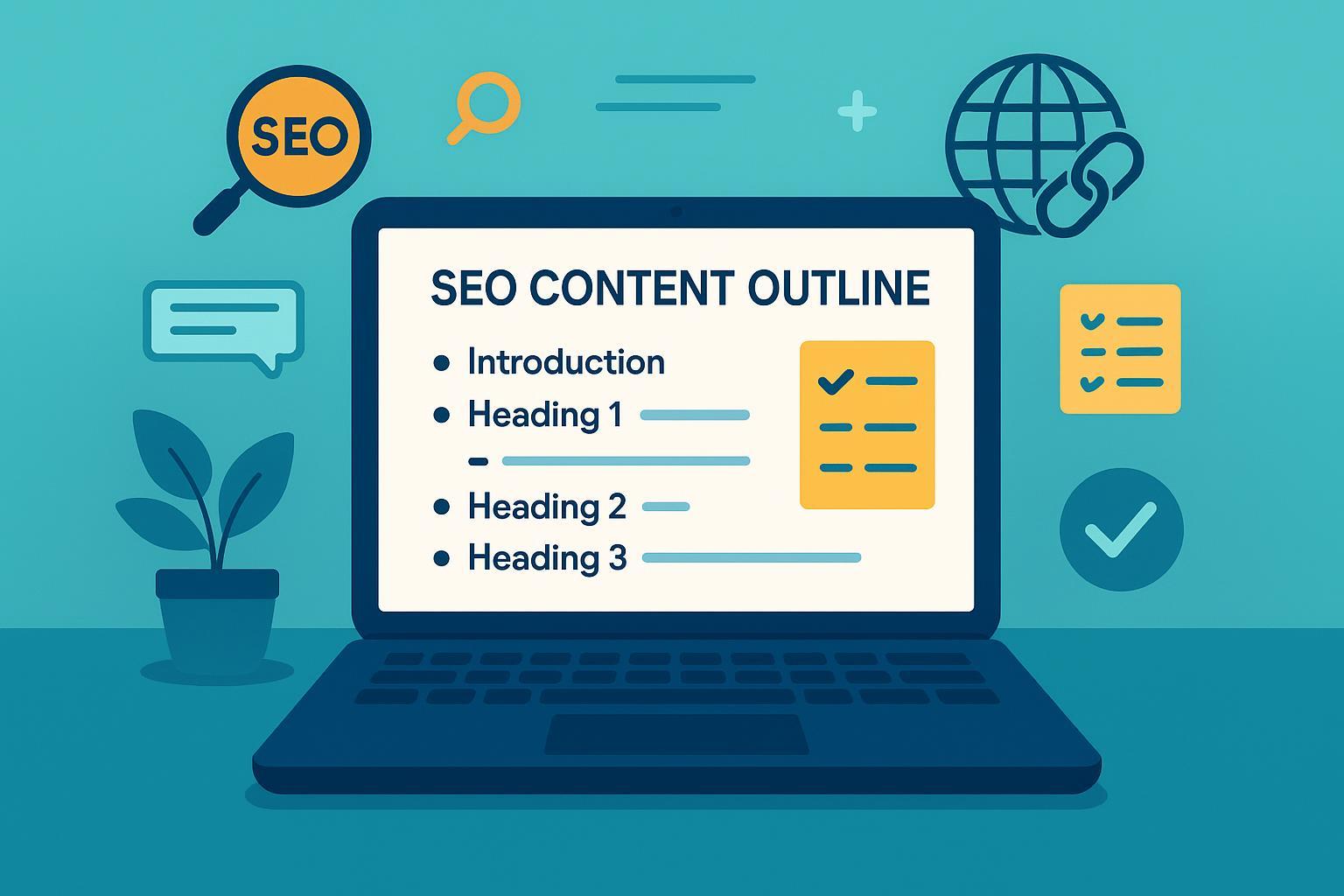How to Craft a Brief SEO Content Outline: Key Elements for Success

Are you stuck staring at a blank doc, unsure where to start your next SEO blog post? A brief yet strategic SEO content outline solves this—and unlocks higher rankings, faster writing, and better engagement. This guide breaks down how to craft a concise SEO outline that covers every critical element for success—no paid tools or expert experience required.
Why a Brief SEO Outline Matters
A streamlined outline:
- Makes writing faster (save 20–40% drafting time)
- Guarantees you hit SEO essentials (keywords, headers, intent)
- Cuts revisions and boosts ranking odds (SurferSEO Guide)
Follow these steps and you’ll consistently produce SEO-ready blog content in under 30 minutes.
Preparation Checklist: What You’ll Need
Before you start, make sure you have:
- Keyword research tool (Free: Google Keyword Planner, AnswerThePublic; or paid: Ahrefs, SEMrush)
- Writing app (Google Docs, Word, Notion, etc.)
- Sample outline template (Free template here)
- Clear understanding of your audience’s search intent
Optional: SERP analysis tool for advanced competitor review.
Prerequisites:
- Familiarity with basic SEO terms (keywords, search intent, headings)
Step-by-Step: Build Your Brief SEO Content Outline
Step 1: Define Your Primary Keyword & Audience Intent
- Open your keyword tool. Type topic ideas and review volume, competition, and related queries.
- Select one main keyword that closely matches your audience’s needs and is achievable for your site.
- Clarify search intent: Check top-ranking articles—are users seeking info, a solution, or a product?
Pro-Tip: Don’t skip this! Matching intent is the #1 cause of failed content.
Step 2: Review Top SERPs for Outline Clues
- Open the top 3–5 Google results for your keyword.
- List their major headers (H2/H3). Note recurring questions and section patterns.
- Identify gaps or opportunities to add your unique angle or missing info.
Time: 5–10 minutes
Step 3: Draft Core Outline Structure
- Title (H1): Ensure it includes your main keyword and matches user expectation.
- Intro Paragraph: Briefly state the problem or promise the value.
- Main Section Headers (H2): Organize 3–5 key points, each addressing a crucial aspect or searcher question.
- Sub-points (H3) if needed for clarity.
- FAQ Section: Add 2–3 common user questions (often seen in People Also Ask). This enhances topical relevance.
- Conclusion: Summarize, reinforce value, and naturally transition to your call-to-action.
- Call-to-Action (CTA): Direct readers to the next step (subscribe, download, contact, etc.).
Keep it brief—aim for a one-page outline. Focus on logic, not filler details.
Step 4: Add On-Page SEO Essentials
- Meta Title & Description: Draft working versions targeting the main keyword and enticing clicks.
- Recommended Word Count: Estimate based on top results (typically 1,000–2,000 words for most niches).
- Internal/External Links: Note where to add strategic links (references, further reading, product pages).
Time: 3–5 minutes. Total outlining time: 15–30 minutes.
Step 5: Validate with a Quick Checklist
Before you start writing, complete this checklist:
- [ ] Primary keyword and intent are clear
- [ ] H1/title and all key H2s reflect SERP & user needs
- [ ] Sections flow logically (no gaps or unnecessary repetition)
- [ ] FAQ and CTA are included
- [ ] SEO elements (meta, links, word count) planned
- [ ] Outline is brief (fits on one page)
Advanced: Share your outline with a peer or use a content checklist for collaborative feedback (Clearscope Guide).
Common Mistakes & Troubleshooting (FAQ)
Q1: What if I can’t tell what the user intent is?
A: Google your keyword, scan first-page headlines, and look for answer formats (guides, lists, how-tos). Pattern matches user expectations.
Q2: I get stuck with too many header ideas—how do I keep it brief?
A: Focus on only the biggest 3–5 questions/topics. If in doubt, check what’s common among the top-performing results.
Q3: Can I just use an AI or free tool?
A: You can! Tools like SurferSEO, GrowthBar, and Ubersuggest will draft outlines quickly. Always review and adapt—tools may miss nuance.
Q4: I’m lost—any sample I can use?
A: Yes. Download this free content brief template or check SurferSEO’s SEO content brief template.
Expert Pro Tips & Resources
- Always state your intended audience and searcher problem on the outline—it keeps you focused.
- Look at “People Also Ask” in Google for extra FAQ inspiration.
- For validation: Have a checklist open and verify each element before you write.
- For collaboration: Share your outline for peer input or feedback.
- For more free learning:
Summary and Next Steps
You’ve just learned how to make a focused, SEO-smart outline that:
- Clarifies your keyword and intent
- Covers all vital content and on-page SEO elements
- Fits on a single page for speed and clarity
Next: Use the downloadable template, follow the checklist—and start outlining your next piece of content.
Want to level up? Explore related guides on full content briefs, optimizing for featured snippets, or repurposing your outline for video and social media.
Now take action—outline your next SEO post in 30 minutes or less!

